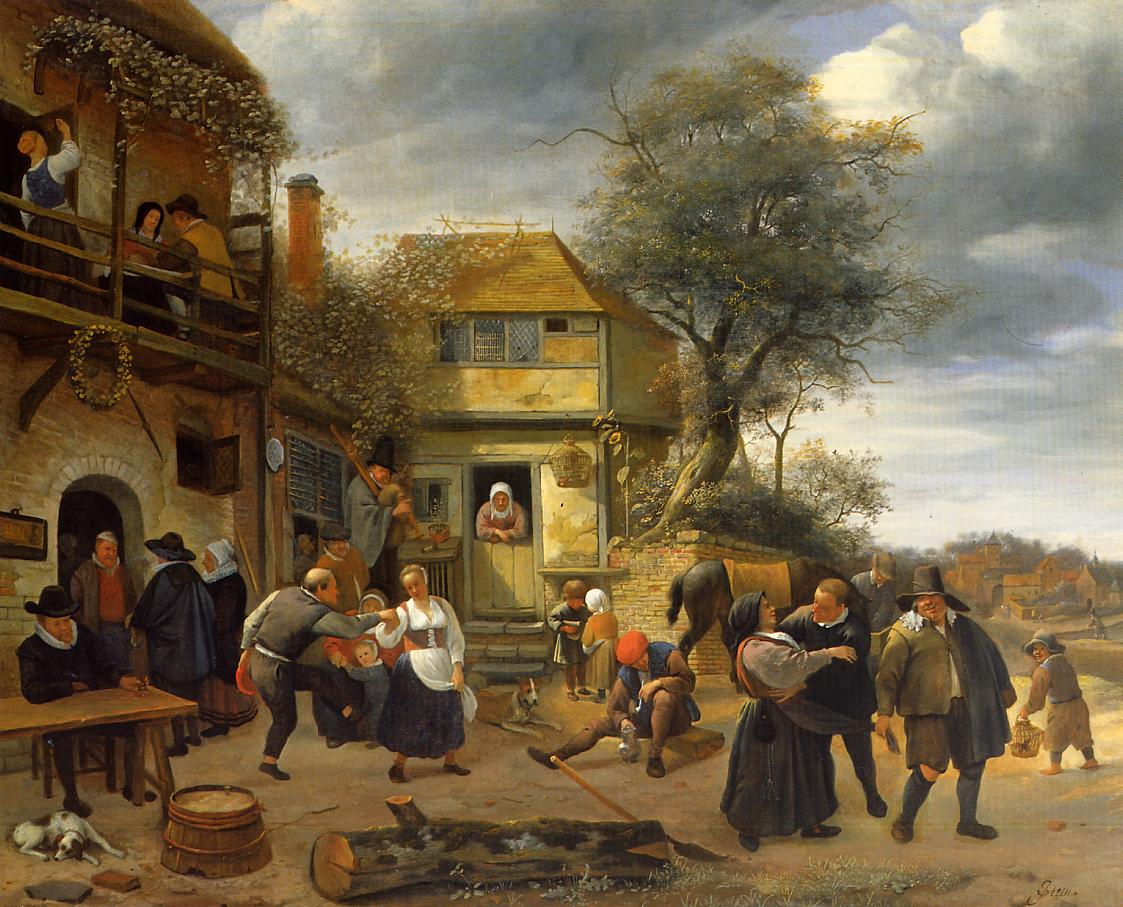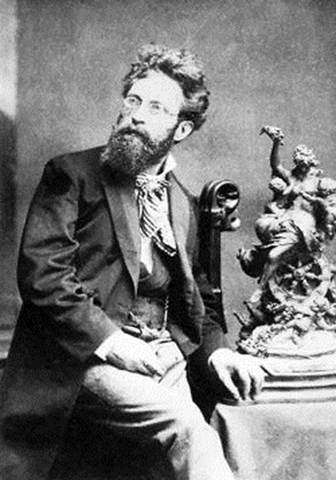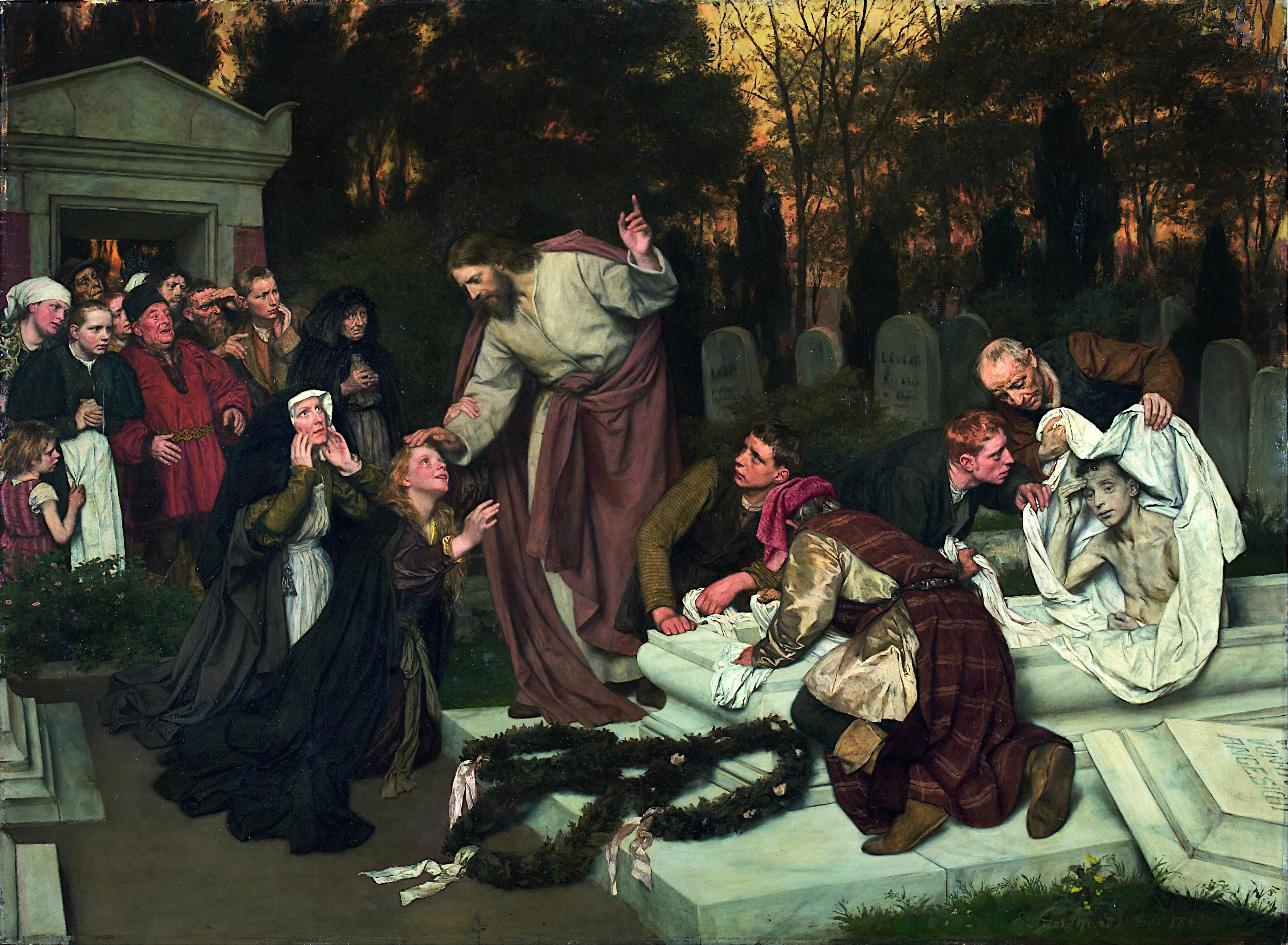|
Adolf Rosenberg
Carl Adolf Rosenberg (1850 – 1906) was a German theater critic and art historian. Rosenberg was born as the son of a Prussian merchant in Bydgoszcz and attended secondary school in Berlin and Cologne. He studied classics and archeology at the University of Berlin.Adolf Rosenberg in the German Wikipedia After completing his doctorate on the Furies, he undertook study trips to places in Germany, Austria, Italy, France, Belgium and the Netherlands. He became a prolific writer on the arts and is known best for his illustrated biographies and catalogs on Rubens, Rembrandt and other artists. Rosenberg died in Berlin. Works * Adolf Rosenberg: ''Herr Professor Boetticher als Archaeologe: Ein Beitrag zur Geschichte der Berliner Archäologie.'' Berlin 1873 * Adolf Rosenberg: ''Die Erinyen. Ein Beitrag zur Religion und Kunst der Griechen.'' Borntraeger Eggers, Berlin 1874 * Adolf Rosenberg: '' Sebald und Barthel Beham, zwei Maler der deutschen Renaissance.'' Seemann, Leipzig 1875 * Hugo ... [...More Info...] [...Related Items...] OR: [Wikipedia] [Google] [Baidu] |
Bydgoszcz
Bydgoszcz ( , , ; german: Bromberg) is a city in northern Poland, straddling the meeting of the River Vistula with its left-bank tributary, the Brda. With a city population of 339,053 as of December 2021 and an urban agglomeration with more than 470,000 inhabitants, Bydgoszcz is the eighth-largest city in Poland. It is the seat of Bydgoszcz County and the co-capital, with Toruń, of the Kuyavian-Pomeranian Voivodeship. The city is part of the Bydgoszcz–Toruń metropolitan area, which totals over 850,000 inhabitants. Bydgoszcz is the seat of Casimir the Great University, University of Technology and Life Sciences and a conservatory, as well as the Medical College of Nicolaus Copernicus University in Toruń. It also hosts the Pomeranian Philharmonic concert hall, the Opera Nova opera house, and Bydgoszcz Airport. Being between the Vistula and Oder (Odra in Polish) rivers, and by the Bydgoszcz Canal, the city is connected via the Noteć, Warta, Elbe and German canals with t ... [...More Info...] [...Related Items...] OR: [Wikipedia] [Google] [Baidu] |
Jan Steen
Jan Havickszoon Steen (c. 1626 – buried 3 February 1679) was a Dutch Golden Age painter, one of the leading genre painters of the 17th century. His works are known for their psychological insight, sense of humour and abundance of colour. Life Steen was born in Leiden, a town in Southern Holland, where his well-to-do, Catholic family were brewers who ran the tavern ''The Red Halbert'' for two generations. Steen's father even leased him a brewery of his own in Delft from the years 1654 until 1657. He was the eldest of eight or more children. Like his even more famous contemporary Rembrandt van Rijn, Jan Steen attended the Latin school and became a student in Leiden. Though no official records of Steen's artistic training are preserved, contemporary sources tell us he received his painterly education from three men, Nicolaes Knupfer (1603–1660), a German painter of historical and figurative scenes in Utrecht, Adriaen van Ostade, and Jan van Goyen, who would later become ... [...More Info...] [...Related Items...] OR: [Wikipedia] [Google] [Baidu] |
Des Meisters Gemälde In 643 Abbildungen
Des is a masculine given name, mostly a short form (hypocorism) of Desmond. People named Des include: People * Des Buckingham, English football manager * Des Corcoran, (1928–2004), Australian politician * Des Dillon (other), several people * Des Hasler (born 1961), Australian rugby league player-coach * Desmond Des Kelly (born 1965), British journalist * Desmond Des Lynam (born 1942), British television presenter * Desmond Des Lyttle (born 1971), English footballer * Desmond Des O'Connor (1932–2020), British entertainer * Des O'Connor, Australian rugby league player in the 1970s * Desmond Des O'Grady (born 1953), Irish retired Gaelic footballer * Des O'Hagan (1934–2015), Irish communist * Desmond O'Malley (1939–2021), Irish politician, government minister and founder and leader of the Progressive Democrats * Desmond Des O'Neil (1920–1999), Australian politician * Des O'Reilly (1954–2016), Australian rugby league player * Desmond Smith (general) (1911–1991 ... [...More Info...] [...Related Items...] OR: [Wikipedia] [Google] [Baidu] |
Wilhelm Valentiner
William Reinhold Valentiner (May 2, 1880 – September 6, 1958) was a German-American art historian, art critic and museum administrator. He was educated and trained in Europe, first working at the Mauritshuis in The Hague and at museums in Berlin. In 1907 he moved to the United States to become the first curator of the department of decorative arts in the Metropolitan Museum of Art, Metropolitan Museum in New York City. After returning to Europe to serve in the German Army in World War I, Valentiner later was appointed to other positions in the US. From the mid-1920s, he strongly influenced the development of museum administration in the United States. He served as director of the Detroit Institute of Art in Michigan, from 1924 to 1945. Valentiner became a naturalized US citizen about 1930 and lived in the country for nearly half his life in total. During the early 1930s, he commissioned Mexican artist Diego Rivera to create a 27-panel mural series about Detroit industry for an ... [...More Info...] [...Related Items...] OR: [Wikipedia] [Google] [Baidu] |
Eduard Heyck
Eduard Heyck (May 30, 1862 – July 11, 1941) was a German cultural historian, editor, writer and poet. Family Eduard Karl Heinrich Berthold Heyck was born at Doberan, Grand Duchy of Mecklenburg-Schwerin, the son of the retired garden center owner Eduard Heyck (1836–1903). He was a son-in-law of the writer and poet Wilhelm Jensen (1837–1911) and the father of Hans Heyck (1891–1972) and Prof. Dr. med. Hartwig Heyck (1912–1982). His first wife, Maina Heyck-Jensen (1870–1940), was a painter and occasional writer. Eduard Heyck studied comparative philology, history and art history at Leipzig, Jena and Heidelberg. After a PhD. thesis judged "summa cum laude" entitled "Genua und seine Marine im Zeitalter der Kreuzzüge" ("Genoa and its navy during the time of the Crusades") (1886) Heyck was appointed "Dozent", i.e. lecturer at Freiburg (Breisgau) university. In 1892 he returned to Heidelberg University as extraordinary professor for history; from the summer of 1896 until s ... [...More Info...] [...Related Items...] OR: [Wikipedia] [Google] [Baidu] |
Raphael
Raffaello Sanzio da Urbino, better known as Raphael (; or ; March 28 or April 6, 1483April 6, 1520), was an Italian painter and architect of the High Renaissance. List of works by Raphael, His work is admired for its clarity of form, ease of composition, and visual achievement of the Renaissance Neoplatonism, Neoplatonic ideal of human grandeur. Together with Leonardo da Vinci and Michelangelo, he forms the traditional trinity of great masters of that period. His father was court painter to the ruler of the small but highly cultured city of Urbino. He died when Raphael was eleven, and Raphael seems to have played a role in managing the family workshop from this point. He trained in the workshop of Perugino, and was described as a fully trained "master" by 1500. He worked in or for several cities in north Italy until in 1508 he moved to Rome at the invitation of the pope, to work on the Vatican Palace. He was given a series of important commissions there and elsewhere in the ... [...More Info...] [...Related Items...] OR: [Wikipedia] [Google] [Baidu] |
Hermann Prell
Hermann Prell (29 April 1854 – 18 May 1922) was a German history painter, sculptor and professor at the Dresden Academy of Fine Arts. Life and work He was born at Leipzig and studied under Theodor Grosse in Dresden and Karl Gussow in Berlin, then went to Italy to study fresco painting with Hans von Marées, in which style he produced the bulk of his works, despite Marées skepticism regarding his talent. Arnold Böcklin was also a major influence. He became a teacher at the Prussian Academy of Art in 1886. That same year, he married Sophie Sthamer, who was also a painter. In 1892, he was appointed a Professor at the Dresden Academy of Fine Arts and remained there until his retirement in 1914. He ranks as one of the foremost German historical painters of his time. He is especially known for his successful use of casein colors in fresco. In later life, he executed sculptures and collaborated on several projects with Otto Lessing, Christian Behrens and Alfred Messel. He main ... [...More Info...] [...Related Items...] OR: [Wikipedia] [Google] [Baidu] |
Friedrich August Von Kaulbach
Friedrich August von Kaulbach (2 June 1850 in Munich – 26 July 1920 in Ohlstadt, Germany) was a German portraitist and historical painter. Biography He was born to a family that included several well known artists and began his studies with his father, Friedrich Kaulbach. He then attended the Academy of Fine Arts, Nuremberg, where he studied with August von Kreling and Karl Raupp. He transferred to the Academy of Fine Arts, Munich, in 1871 and worked with Wilhelm von Diez. In 1883, he became a teacher there himself. Along with Franz von Lenbach and Franz von Stuck, he was known as one of the "Malerfürsten" (painter princes) and was one of the highest paid portrait painters in Germany. His works were commissioned by the uppermost social circles there and in America. His painting, "Children's Carnival" (the five children of mathematician Alfred Pringsheim), shows Katia Pringsheim (far left), who would later marry the writer, Thomas Mann. Several stays in Paris followed. In 18 ... [...More Info...] [...Related Items...] OR: [Wikipedia] [Google] [Baidu] |
Isaac Van Ostade
Isaac van Ostade (bapt. June 2, 1621 – buried October 16, 1649) was a Dutch genre and landscape painter. Biography Van Ostade was born in Haarlem. He began his studies under his brother, Adriaen, with whom he remained until 1641, when he started his own practice. At an early period he felt the influence of Rembrandt, and this is apparent in a ''Slaughtered Pig'' of 1639, in the gallery of Augsburg. He soon found a style more suited to his own inclinations. He produced pictures in 1641–1642 on the lines of his brother – amongst these, the Five Senses, which Adrian afterwards represented by a ''Man reading a Paper'', a ''Peasant tasting Beer'', a ''Rustic smearing his Sores with Ointment'' and a ''Countryman sniffing at a Snuff-box''. A specimen of Isaac's work at this period may be seen in the ''Laughing Boor with a Pot of Beer'', in the museum of Amsterdam; the cottage interior, with two peasants and three children near a fire, in the Berlin museum; a ''Concert'', with p ... [...More Info...] [...Related Items...] OR: [Wikipedia] [Google] [Baidu] |
Adriaen Van Ostade
Adriaen van Ostade (baptized as Adriaen Jansz Hendricx 10 December 1610 – buried 2 May 1685) was a Dutch Golden Age painter of genre works, showing everyday life of ordinary men and women. Life According to Arnold Houbraken, he and his brother were pupils of Frans Hals and like him, spent most of their lives in Haarlem. He thought they were " Lubekkers" by birth, though this has since found to be false.Adriaan & Izaak van Ostade biography in ''De groote schouburgh der Nederlantsche konstschilders en schilderessen'' (1718) by , courtesy of the |
Gustav Eberlein
Gustav Heinrich Eberlein (14 July 1847, Spiekershausen (near Staufenberg) - 5 February 1926, Berlin) was a German sculptor, painter and writer. Life He was the son of a border guard. At the age of eight, his family moved to Hannoversch Münden, which would be his home for the remainder of his life, despite many years spent elsewhere. His parents lacked the money to provide him with formal artistic training, so he obtained instruction wherever possible, especially from the local goldsmith. In 1866, thanks to the patronage of a pastor who had recognized his talents, he was able to attend the Academy of Fine Arts in Nuremberg. In 1869, he went to Berlin on a scholarship. Three years later, another scholarship enabled him to study in Rome. Upon his return to Berlin, he received significant support from Martin Gropius. Despite growing success, the next decade was difficult. His three-year-old son died in 1882, then his mother in 1888. This was followed by a divorce in 1891. A year l ... [...More Info...] [...Related Items...] OR: [Wikipedia] [Google] [Baidu] |
Eduard Von Gebhardt
Franz Karl Eduard von Gebhardt (13 June 1838 – 3 February 1925) was a Baltic German painter of portraits and historical scenes, and a professor at the Kunstakademie Düsseldorf. Biography He was born to Ferdinand Theodor von Gebhardt (1803–1869), Provost (religion), Provost and member of the Consistory (Protestantism), Consistorial Council in Tallinn, Reval, and his wife, Wilhelmine, née Von Glehn (1808–1880). He graduated from the local Gymnasium (school), gymnasium at sixteen, and enrolled at the Imperial Academy of Arts in Saint Petersburg, where he studied for three years. He then spent two years travelling, spending some time in Karlsruhe, where he took classes at the Academy of Fine Arts, Karlsruhe, Academy of Fine Arts. He arrived in Düsseldorf in 1860, and became a student of Wilhelm Sohn, who gave him such wholehearted encouragement that he decided to stay there. He settled on a street which was the home of several other artists and their studios. In 1872, he ... [...More Info...] [...Related Items...] OR: [Wikipedia] [Google] [Baidu] |






